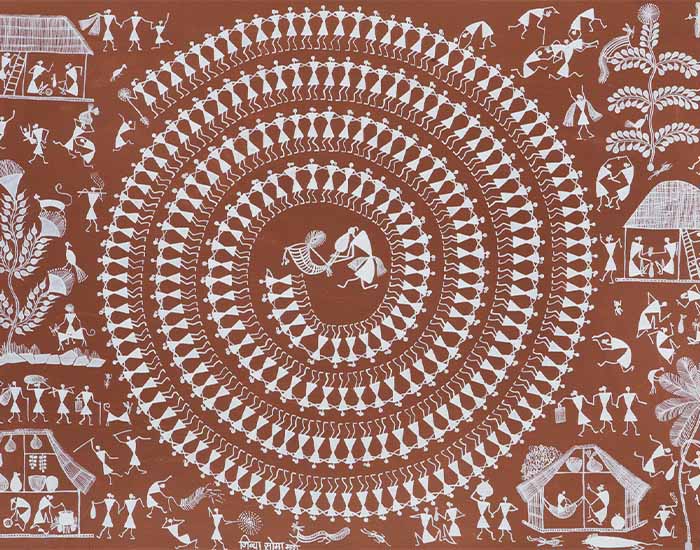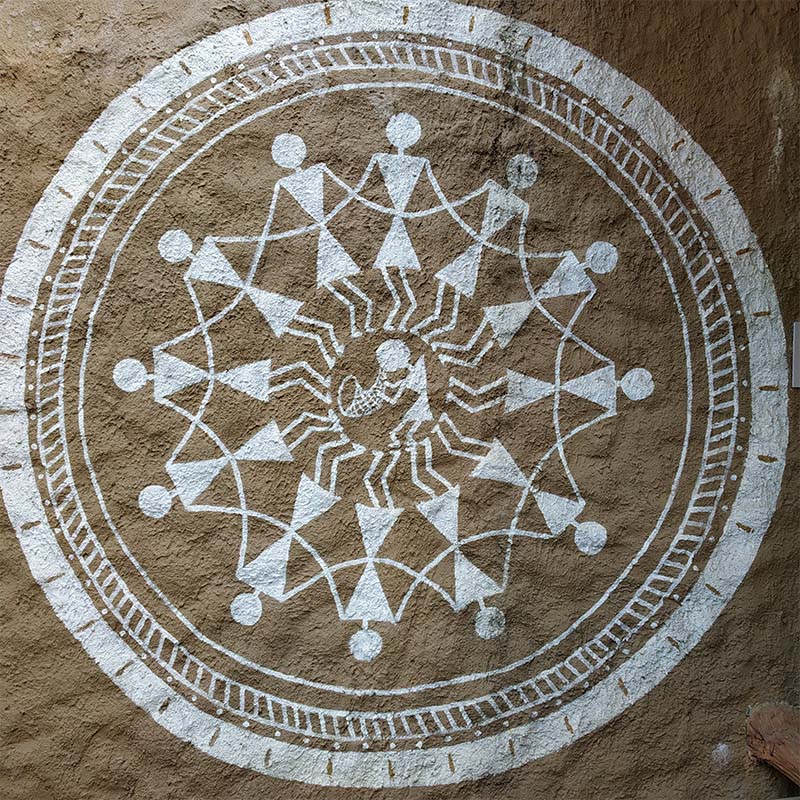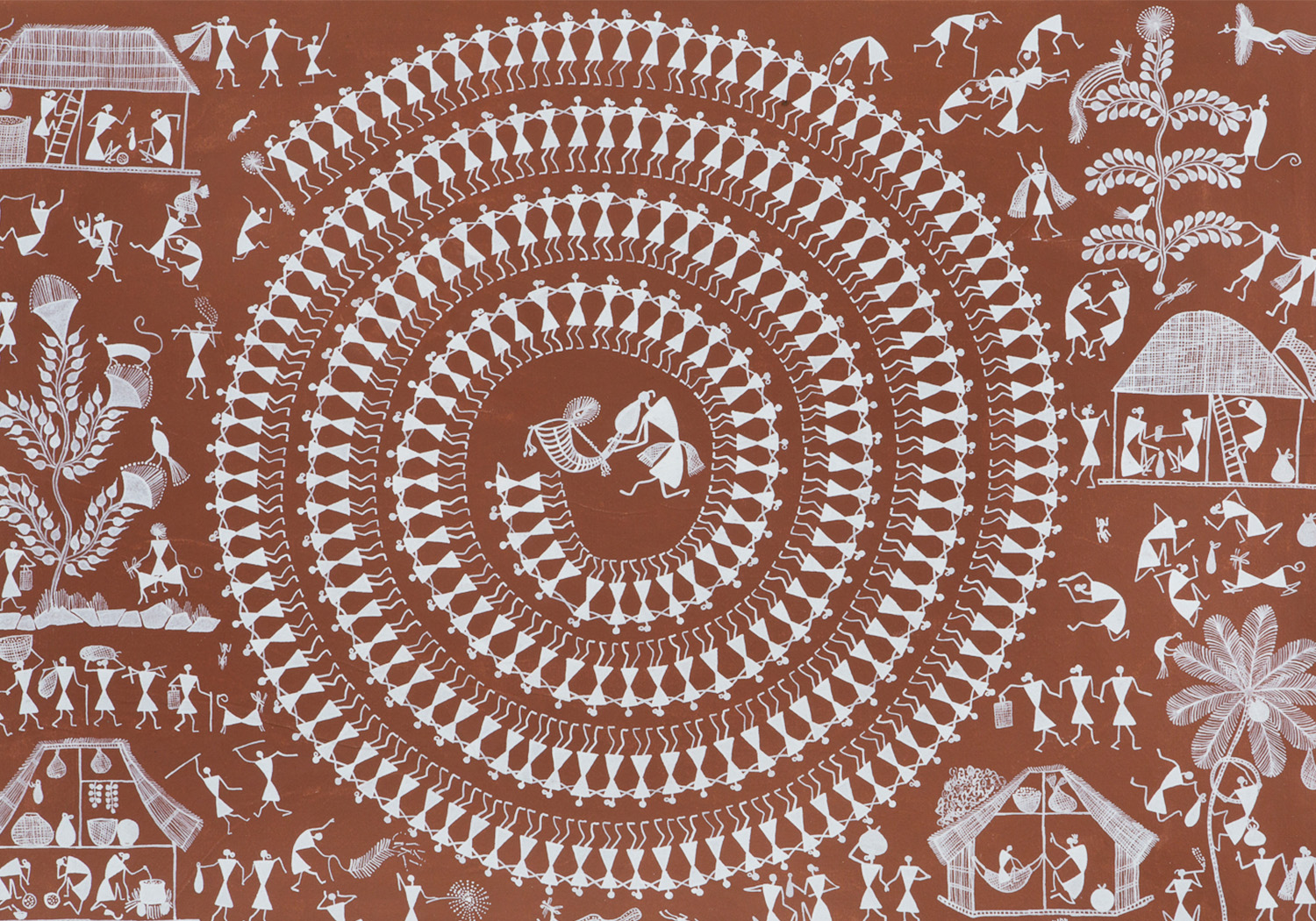Encyclopedia of Art > Articles
Warli Painting

A traditional form of mural art, Warli painting is practised by people of the Warli community in Maharashtra and parts of Gujarat. Composed of distinct motifs as well as depictions of human and animal forms, these murals were traditionally painted on the walls of mud homes during the harvest and the wedding season in these states.
While the history of the Warli community and the origins of its artistic traditions are not clearly established, some historians – noting similarities between Warli painting and the murals at the Bhimbetka rock caves – believe that Warli painting may have its roots as far back as the tenth century BCE.
The first step in the creation of a Warli painting involves levelling and smoothing the surface of the mud wall. On the smoothened surface, a paste of cow dung and geru is applied to form the background of the painting. The primary pigment is white, and is derived from a paste of rice flour, while a bamboo stick, crushed at one end to form bristles, is used as a brush. The act of painting is called lihane, which is also the Warli word for writing.
Warli painting celebrates the cultural, religious and economic life of the community, depicting scenes and motifs from activities such as agriculture, fishing and hunting as well as festivals and occasions like marriages and births. Nature, which has a dominant influence on the religious beliefs of the Warli community, also features prominently in these painted murals. Lines, triangles, squares and circles are used to depict humans, animals and plants in a two-dimensional space. Landscapes including fields, rivers and the forest are clearly demarcated, and there is no overlap between the various patterns and the figures of animals or humans. Scholars speculate that the use of spiral formations and circular designs are inspired by the traditional Tarpa dance, in which members of the community gather around a musician playing the tarpa, a wind instrument made from a gourd.
Traditionally, Warli painting has been done primarily by women. Further among these women are artists called sahavasini, who specialise in painting the chawk – also known as a lagna chawk or a dev chawk – which is a ritual painting comprising a square enclosing a depiction of Palaghata Devi, the Warli goddess of fertility. It is a crucial part of Warli wedding ceremonies and members of the community sing songs before the chawk as it is painted.
The depiction of the goddess and the details of the chawk itself may vary from region to region. The square frame of the chawk is usually filled with motifs inspired by objects used during the marriage rites. In some older chawk, figures symbolising the bride and groom were depicted inside the womb of the goddess, while in other areas, the form of the goddess is composed of triangular shapes joined at the apex. Palaghata Devi is often shown with raised hands to symbolise her blessings.
During the 1970s, Warli painting caught the attention of a wider audience. This was largely due to the works of Warli artist Jivya Soma Mashe, who is credited with helping the art form gain recognition in popular and contemporary art circles. Since then, Warli painting has been adapted to different surfaces such as paper, cloth and canvas, and has incorporated the use of different materials such as acrylic colours and gum instead of the traditional rice paste. In 2014, it received a Geographical Indications (GI) tag from the Indian government.
First Published: April 21, 2022
Last Updated: July 26, 2023




